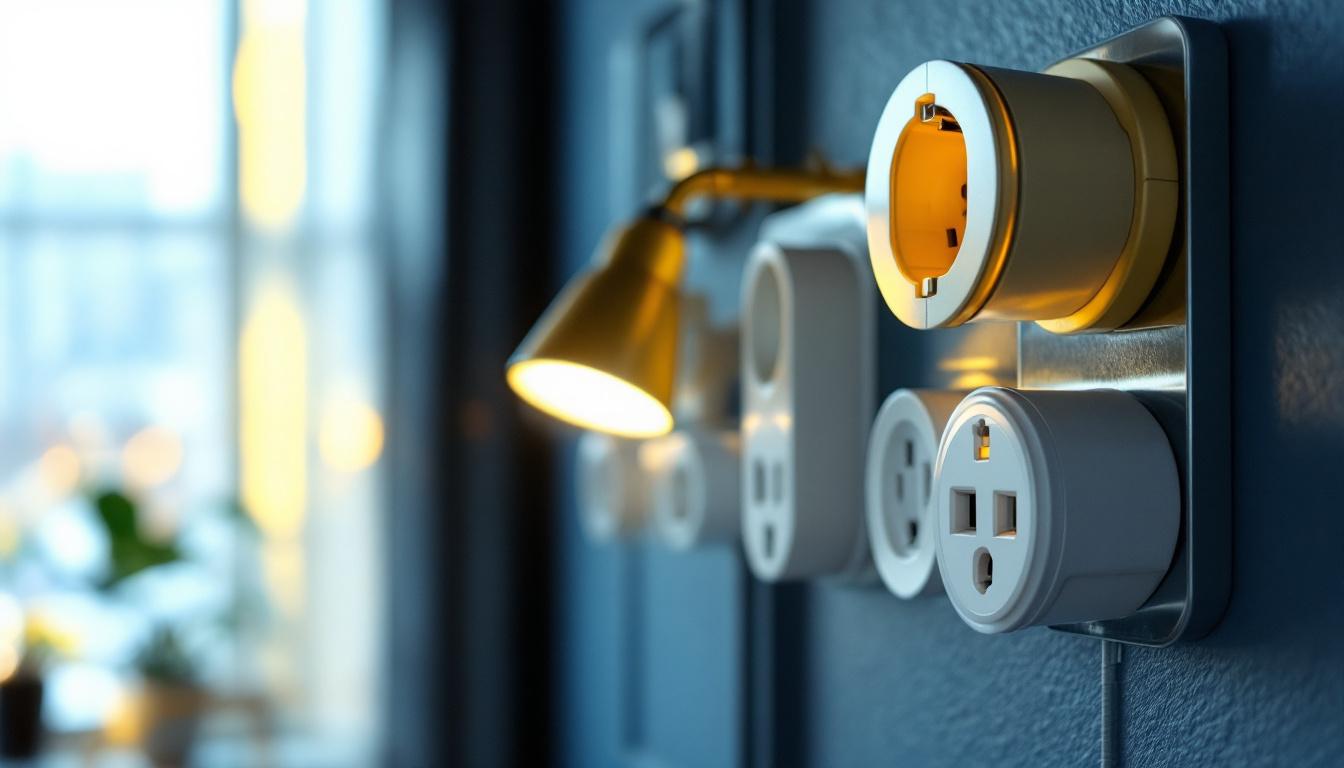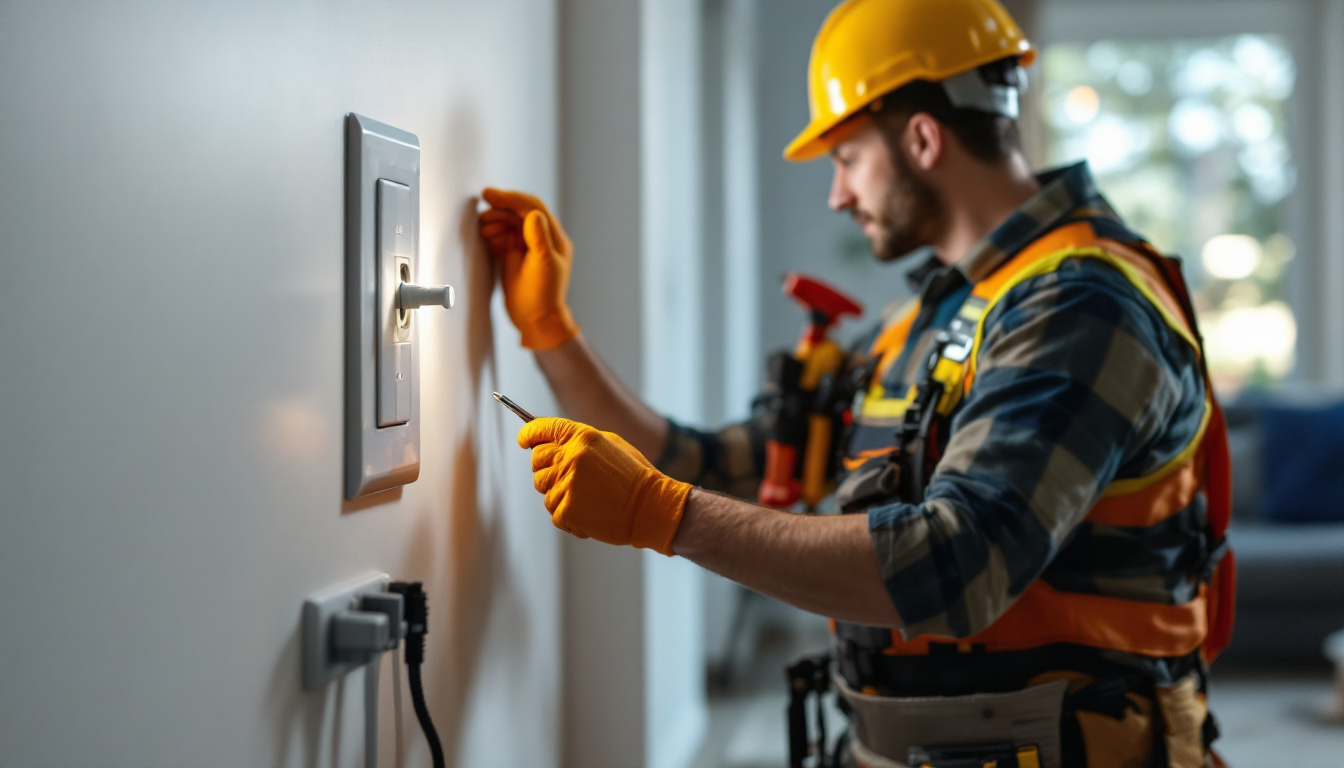
In the world of electrical installations, receptacles play a crucial role in ensuring that lighting systems function effectively and safely. For lighting contractors, understanding the various types of receptacles, their applications, and installation practices is essential. This comprehensive guide delves into the intricacies of receptacles, providing valuable insights that can enhance your expertise and improve your projects.
Receptacles, commonly referred to as outlets, are electrical devices that provide a point of connection for electrical devices to draw power. They are integral components of any electrical system, facilitating the distribution of electricity to various fixtures, including lighting. The design and functionality of receptacles can vary significantly depending on their intended use.
There are several types of receptacles available, each serving different purposes. The most common types include standard duplex receptacles, GFCI (Ground Fault Circuit Interrupter) receptacles, and AFCI (Arc Fault Circuit Interrupter) receptacles. Understanding the distinctions between these types is essential for selecting the right receptacle for a specific application.
Standard duplex receptacles are the most widely used and are typically found in residential and commercial settings. They provide two outlets for plugging in devices and are suitable for general lighting and appliance use. GFCI receptacles, on the other hand, are designed to protect against electrical shock by shutting off power when they detect a ground fault. These are often required in areas where water is present, such as kitchens and bathrooms. The installation of GFCI receptacles not only enhances safety but also complies with building codes that aim to minimize the risk of electrical accidents in moisture-prone environments.
AFCI receptacles are designed to prevent electrical fires by detecting arc faults, which can occur due to damaged wiring or faulty appliances. These receptacles are increasingly being mandated in new construction and renovation projects, particularly in living areas and bedrooms. The technology behind AFCI receptacles involves sophisticated sensors that can differentiate between harmless electrical arcs and those that pose a fire risk, making them a critical component in modern electrical safety measures.
When selecting receptacles, it is crucial to consider their ratings and specifications. Receptacles are typically rated based on their voltage, amperage, and the type of circuit they are designed for. Most residential receptacles are rated for 120 volts and 15 or 20 amperes. However, for specialized applications, such as heavy-duty appliances or outdoor equipment, higher-rated receptacles may be necessary, such as those rated for 240 volts.
For lighting applications, it is essential to ensure that the receptacles can handle the load of the fixtures being installed. Overloading a receptacle can lead to overheating and potential fire hazards. Additionally, contractors should be aware of the National Electrical Code (NEC) requirements, which dictate specific standards for receptacle installations, including spacing and placement. Proper spacing is particularly important to ensure accessibility and convenience, as well as to prevent the use of extension cords, which can pose additional safety risks. Furthermore, receptacles should be installed at appropriate heights to accommodate various devices, including those used by individuals with disabilities, thereby promoting inclusivity in design.
Proper installation of receptacles is critical for ensuring safety and functionality. Adhering to best practices not only enhances the performance of lighting systems but also reduces the risk of electrical hazards. A well-installed receptacle can significantly improve the efficiency of electrical devices, providing a stable connection that minimizes the risk of power surges and interruptions.
Before beginning an installation, it is essential to gather the necessary tools and materials. Common tools include a voltage tester, wire strippers, screwdrivers, and pliers. In addition, contractors should have the appropriate receptacles, electrical boxes, and wiring on hand, ensuring they meet the required specifications for the project. Depending on the complexity of the installation, additional tools such as a circuit breaker finder or a fish tape might be beneficial for troubleshooting and ensuring proper wire placement.
Using high-quality materials is crucial for long-term performance. Cheap or substandard receptacles can lead to frequent failures, increasing maintenance costs and compromising safety. It is advisable to source materials from reputable suppliers to ensure reliability. Moreover, selecting receptacles with built-in safety features, such as tamper-resistant designs or surge protection, can provide extra layers of safety, particularly in homes with children or sensitive electronics.
Installing a receptacle involves several key steps, each of which must be performed with care. First, ensure that the power is turned off at the circuit breaker to prevent electrical shock. Next, use a voltage tester to confirm that the circuit is de-energized. This initial step is vital, as it protects not only the installer but also the integrity of the electrical system.
Once it is safe to proceed, remove the existing receptacle if applicable. This involves unscrewing the receptacle from the electrical box and disconnecting the wires. When connecting the new receptacle, follow the manufacturer’s instructions carefully. Typically, the black (hot) wire connects to the brass terminal, the white (neutral) wire connects to the silver terminal, and the green or bare wire (ground) connects to the green terminal. It’s also important to ensure that the wire connections are tight and secure to prevent any arcing or overheating during operation.
After making the connections, carefully tuck the wires back into the electrical box and secure the receptacle in place with screws. Finally, attach the cover plate and restore power at the circuit breaker. Test the receptacle with a voltage tester to ensure it is functioning correctly. Additionally, it is wise to conduct a load test by plugging in a device to confirm that the receptacle can handle the expected electrical load without issue. This thorough approach not only guarantees the immediate functionality of the installation but also contributes to the overall safety and reliability of the electrical system in the long run.
Safety is paramount when working with electrical systems. Contractors must adhere to strict safety protocols to protect themselves and their clients. Understanding the potential hazards associated with receptacles is essential for minimizing risks.
Proper grounding and bonding are critical for the safe operation of receptacles. Grounding provides a path for electrical current to return to the ground in the event of a fault, reducing the risk of electrical shock. All receptacles should be connected to a grounding system, which typically involves connecting the ground wire to the grounding terminal on the receptacle.
Bonding, on the other hand, ensures that all metal parts of the electrical system are connected, reducing the risk of electrical shock. This is particularly important in areas where water is present, as it helps to prevent ground faults. Contractors should always verify that grounding and bonding are correctly implemented during installation.
Regular inspections and maintenance of receptacles are essential for ensuring long-term safety and performance. Contractors should encourage clients to periodically check receptacles for signs of wear, such as discoloration, cracking, or loose connections. Any damaged receptacles should be replaced immediately to prevent hazards.
In addition to visual inspections, it is advisable to test GFCI and AFCI receptacles monthly to ensure they are functioning correctly. This can be done by pressing the “test” button on the receptacle, which should cause the power to shut off. If the receptacle does not reset after pressing the “reset” button, it may need to be replaced.
The electrical industry is continually evolving, with new technologies emerging to enhance the functionality and safety of receptacles. Staying informed about these trends can provide contractors with a competitive edge.
Smart receptacles are gaining popularity as part of the growing trend toward home automation. These receptacles allow users to control their devices remotely via smartphone apps or voice commands. They often come equipped with features such as energy monitoring, scheduling, and integration with smart home systems.
For lighting contractors, offering smart receptacle installations can be an attractive selling point for clients looking to enhance their home automation systems. Understanding how to install and configure these devices is becoming increasingly important in the modern electrical landscape.
USB receptacles are another innovative development that has gained traction in recent years. These receptacles feature built-in USB ports, allowing users to charge devices without needing a separate adapter. This is particularly useful in residential settings where multiple devices require charging, such as smartphones, tablets, and laptops.
Installing USB receptacles can add convenience for clients and is an excellent way to modernize existing electrical systems. As more devices rely on USB charging, incorporating these receptacles into new installations can enhance the overall functionality of the lighting system.
Receptacles are a fundamental component of any electrical system, particularly in lighting applications. For lighting contractors, understanding the various types of receptacles, installation practices, safety considerations, and emerging trends is essential for delivering high-quality services. By staying informed and adhering to best practices, contractors can ensure the safety and satisfaction of their clients while enhancing the overall performance of their lighting systems.
As the electrical industry continues to evolve, embracing new technologies and innovations will be key to maintaining a competitive edge. By investing time in learning about receptacles and their applications, lighting contractors can position themselves as knowledgeable professionals in a rapidly changing landscape.
Ready to elevate your lighting installations with the highest quality receptacles and lighting products? Look no further than LumenWholesale, where we provide contractors with spec-grade lighting essentials at unbeatable wholesale prices. Say goodbye to local distributor markups and hello to our premium selection that meets rigorous industry standards. With LumenWholesale, you can enjoy the convenience of bulk buying with free shipping, ensuring you get the best value without any hidden costs. Make your next project shine and experience the best in wholesale lighting today.

Discover essential guidelines for lighting contractors with our comprehensive guide on 20 amp switches.

Discover innovative hacks for smart lighting contractors to enhance outdoor spaces with solar driveway post lights.

Discover how industrial style hanging lights can transform your space with their unique blend of functionality and aesthetics.

Discover how the right electrical equipment tools can significantly boost profits for lighting contractors.